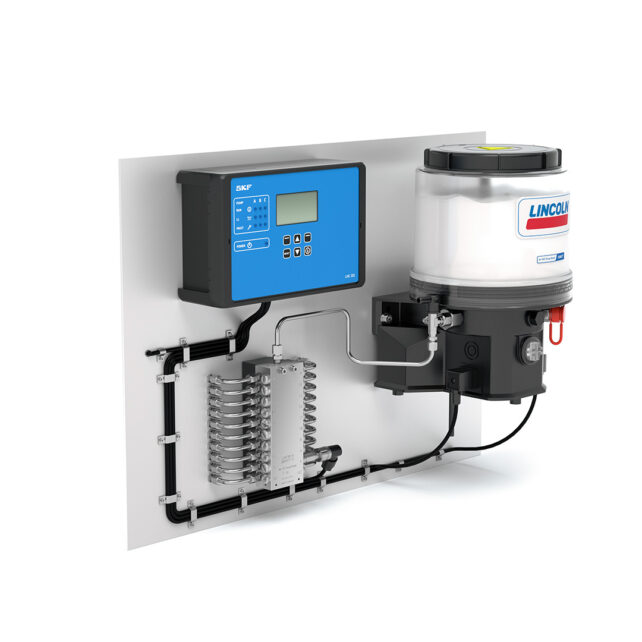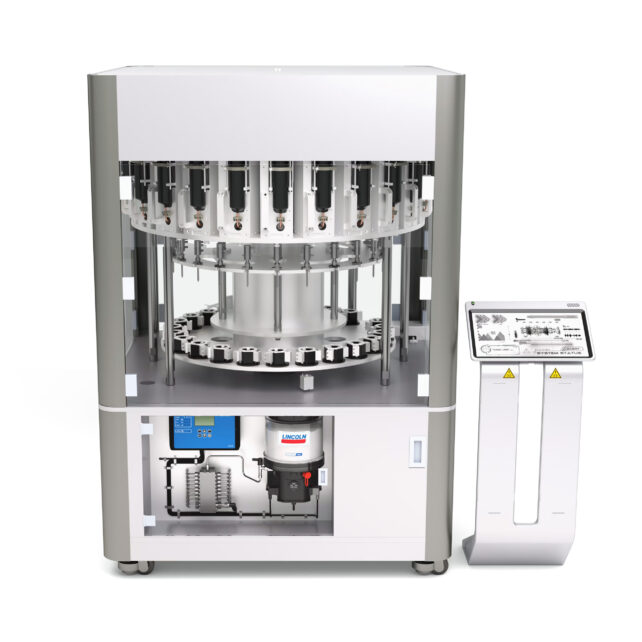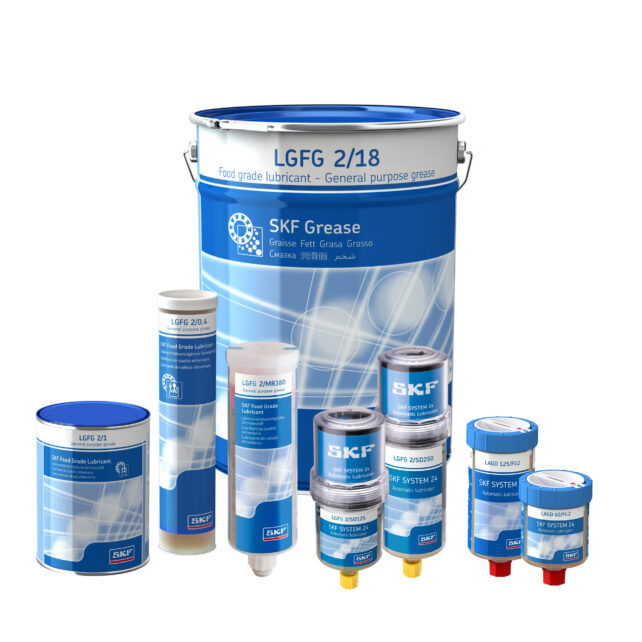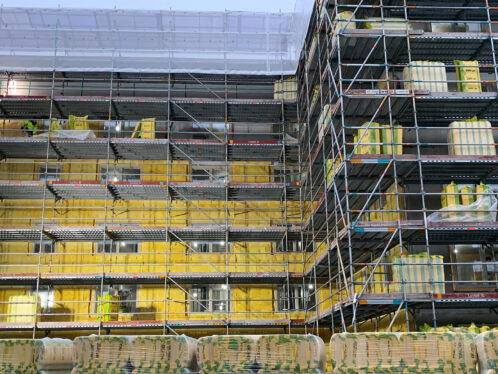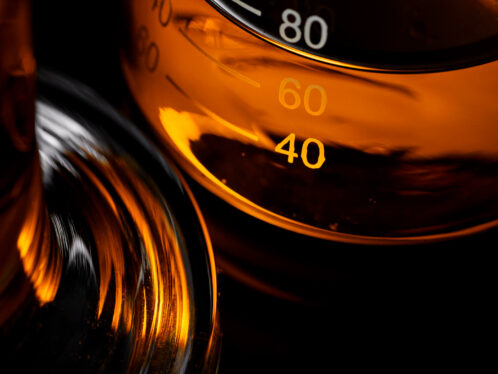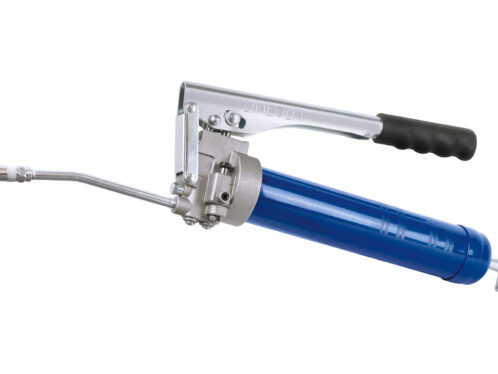
A thirst for automation: Intelligent filling machine lubrication for the beverage industry
Upgrading to an automated lubrication system can bring food and beverage manufacturers a score of benefits, economic and beyond.
You need only stroll down the beverage aisle of your local store to know that bottled drinks have become a consumer staple and that the range of products is overwhelming. The growing demand for drinks at convenient locations – work, school, gym, transport– is being driven by the global trend towards urbanization, fuelled in turn by inexorable population growth. Inevitably, snowballing consumption increases the pressure on manufacturers as well as on the machines upon which they rely.
Small wonder then that the beverage industry is becoming increasingly competitive. It is common for manufacturers to demand 24-hour production, leaving little time for maintenance and requiring that upkeep be performed while the equipment is still in operation. Machine failures have a dramatic impact on availability; the goal of overall equipment effectiveness (OEE) at 80 percent or higher often clashes with a reality of around 60 percent.
One of the most critical applications determining overall OEE in beverage manufacture is the filling machine itself. Faced with the need to fill glass bottles, cans, pouches, tubes, PET or other containers with anything from water or tea to smoothies and yoghurt, manufacturers look for filling equipment that is accurate, versatile, hygienic and reliable, even when operating continuously, at high speeds and without planned maintenance breaks.
Automated lubrication systems offer a new approach in beverage filling machines.
Filling machines and lubrication
SKF customers in the food and beverage sector can cite a number of lubrication challenges that affect the performance of filling machines.
- Too little grease: Lack of lubricant shortens the lifetime of the bearing and that of the machine. Both under- and over-lubrication can be due to imprecise metering and also because some lubricating points are simply forgotten, especially those that are difficult to reach or cannot be accessed while the machine is in motion.
- Too much grease: The paramount risk here is costly contamination of the product. But an equally critical problem is that grease can enter the water used to clean the machine, requiring water treatment processes to meet environmental regulations.
- Complexity: A filling machine can have as many as 80 lubrication points, many of which are located inside rotating mechanical parts and therefore impossible to access while machinery is running. Manual access can be complicated by safety concerns. Components vary, and their efficient lubrication can be complex. Gear wheels are an example, and their lubrication is fundamental to a machine’s performance.
- Corrosion: Lubrication systems may not be designed to operate under the aggressive conditions of the beverage industry, such as high humidity, which can lead to corroded metering devices, grease nipples and piping. Frequent high-pressure washing is mandatory on bottling lines and poses a real challenge to the integrity of bottling mechanisms and their lubrication. In short, corrosion is damaging for beverage manufacturing sites.
Automated solutions
Here we explore a new approach and consider the potential of automated lubrication systems and food-grade lubricants in beverage filling machines.
Centralized automatic lubrication systems (ALS) have the potential to increase machine availability while reducing reliance on scarce talent. These systems provide the appropriate quantity of lubrication at the correct intervals, minimizing friction and wear and optimizing bearing and machinery service life. Designed to lubricate individual machines as well as entire plants, ALS provide proper, precise lubricant replenishment to all required points, enabling a range of benefits in the process.
An intelligent machine, made from non-corrosive materials, therefore has the potential to eliminate the common problems listed above. By delivering the correct lubricant, in the right quantity, at the right time and to the correct lubrication point, automation removes human error, hugely simplifies lubrication management, reduces lubricant consumption and enhances the overall efficiency of the bottling process.
What system to choose?
There are several main factors at play in determining the correct choice of solution for a particular filling machine:
- Dimensions: The size of the filling machine determines the number of lubrication points, and thus total lubricant consumption.
- Variation: The chosen system must have the capacity to deliver an exact quantity of grease or oil to each lubrication point, which may vary according to the part of the machine to be lubricated.
- Technical parameters: The system must consider back pressures at the lubrication points, operating temperature range, the choice of lubricant itself and the feed pump’s drive energy, control and monitoring.
- Types of mechanisms to be lubricated: These include bearings, gears, selection screws, etc.
- Factory environment: In most circumstances, stainless steel components are essential to avoid corrosion. However, not all automated lubrication systems use corrosion-free materials.
Types of automated lubrication systems
Single-line automatic lubrication systems
A pump delivers lubricant to an adjustable metering device that services the lubrication points, delivering a precise amount of grease or oil. Single-line lubrication systems can be used to service several separate machines or a single machine or even different zones on a single machine. Monitoring is done by sensors that monitor system pressures and send signals to the control unit at preadjusted critical values. The control unit enables lubrication to be triggered automatically at predetermined intervals. Single-line lubrication systems can serve as many as 900 lubrication points in machines over distances of up to 100 metres. Smaller systems are fed by compact pump units, including lubricant reservoirs; bigger systems are fed by barrel pumps. Installation is easier than with a progressive grease lubrication system, but the initial investment in a single-line grease lubrication system may be higher.
Progressive automatic lubrication systems
This is the most common lubrication system in the food and beverage industry. It can be used on small to medium-sized machines with dispersed lubrication points that require varying quantities of grease or oil. Progressive lubrication systems consist of a pump connected to a primary metering device, outlets from which are connected via pipes or high-pressure hoses to the lubrication points of the filling machine. The pump supplies lubricant to the meter, which splits the lubricant into predefined amounts. The lubricant is then pumped to the lubrication points or – alternatively – to the inlet of a secondary metering device, thereby enabling more points to be lubricated. Progressive lubrication systems can dispense a precise, metered amount of lubricant to as many as 150 lubrication points over distances of approximately 15 metres.
99,5% of operated beverage filling machines are manually lubricated
Although there is an initial cost to installing an ALS, the return on investment can come faster than might be assumed. Firstly, labour costs are significantly reduced. And there are also considerable savings from reduced downtime and extended component life. There is no need to stop the machine for lubrication, only to keep the system filled and maintained, so efficiency is enhanced. Lubrication that takes place while the bearings are rotating also improves the distribution of lubricant. A small amount of grease remains flowing, keeping out contamination even when the machine is operating in a harsh environment.
Return on investment
Smart sensors and digital measuring devices also make it possible to constantly monitor the entire lubrication process. Monitoring and control are essential to the efficient operation of lubrication systems. Installed in conjunction with intelligent monitoring devices, automatic lubrication systems can facilitate economical and optimal lubrication. The resulting data can give operators advanced warning of lubrication or machine failure, enabling preventive action to be taken.
SKF has found that the potential of automatic lubrication systems for filling machines can be measured in economic terms:
- Increased asset availability: With the reliability that comes with automated lubrication, the frequency and duration of downtime because of mechanical failures is sharply reduced. SKF has experience of applications in which downtime reduction has been as much as 80 percent.
- Lower consumption of spare parts: With lubrication failures eliminated, annual consumption of spare parts such as bearings, chains and gear wheels is reduced by around 50 percent on average.
- Reduced maintenance costs: Accurate and appropriate lubrication removes one of the main causes of machine failure.
- Higher speed: A bottling plant can as much as double the speed of a spiral conveyor, because automatically lubricated transmission chains can run faster without damaging the bottles.
Automated lubrication systems offer a number of additional benefits:
- Higher productivity: Apart from the increase in machine uptime, the reduction in labour necessary to carry out routine lubrication makes automation an obvious route to increased efficiency.
- Improved health and safety: Workers are no longer exposed to potential hazards during manual lubrication of machines during operation.
- Lower risk of product contamination: Automation eliminates the danger of contaminating beverages through over-lubrication.
- Rapid return on investment: All the above factors combine to deliver a swift return on investment in automated lubrication systems for beverage filling machines.
Compliance with food safety regulations
Regulation is increasingly affecting global food and beverage production, with stricter rules that require food processors to change their processes or modify their machines. In some countries, stainless steel is already obligatory for critical machine parts. Components for use in damp areas must be corrosion-free and amenable to high-pressure cleaning. Health concerns are also rising with regard to the use of inappropriate lubricants in the manufacture of food and beverage products. Lubricants themselves must be certified safe for incidental contact with items to be consumed by humans, and they must be compliant with the dietary specifications of the world’s major religions. Upgrading to automated lubrication can bring the additional benefit of compliance with existing or anticipated regulations. Components must be coated in stainless steel or housed in a stainless steel cabinet, ensuring that migration of contaminants takes place, if at all, in completely harmless amounts.
Conclusion
SKF and Lincoln lubrication products, systems and services are available through a global network of distributors, supported by a unified sales organization around the world to offer turnkey solutions and extensive aftermarket support, including food-grade lubricants tailored to the beverage sector. We are committed to your success through optimizing your lubrication management.


